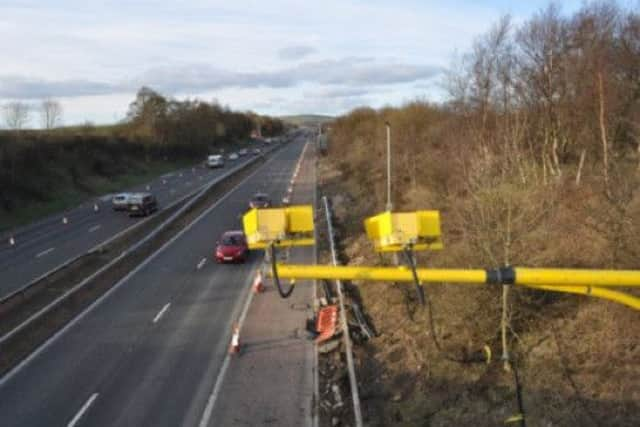Danny Alexander slams A9 average speed camera plan


The Chief Secretary to the Treasury and Inverness, Nairn, Badenoch & Strathspey Liberal Democrat MP has called for the Scottish Government to produce evidence that the £2.5 million scheme would help prevent crashes.
Cameras which measure speeds over set distances are due to be installed on a 136-mile section between Dunblane and Inverness by next summer in an attempt to cut the casualty toll on the road.
Advertisement
Hide AdAdvertisement
Hide AdIn a letter to transport minister Keith Brown, Mr Alexander also urged him to use some of the £1.1 billion which Mr Alexander said the UK Government had made available over the last three years for building projects to bring forward completion of the dual carriageway on the A9 between Perth and Inverness.
It is currently due to be finished in 2025 at a cost of £3bn
Opposition has mounted to the cameras plan since it was announced last month, amid concern that many crashes are caused by dangerous overtaking and drivers being confused about whether they are on a single or dual carriageway section, rather than speeding.
Lorry drivers, who are campaigning to have their speed limit increased from 40mph to 50mph on single carriageways, are planning a protest against the cameras.
The Cabinet minister accused the SNP of slow progress on A9 improvements since being elected in 2007.
Mr Alexander said: “There is no good reason why it should take six years to do next to nothing. At a UK level, we are working to shorten the timelines for new road projects to less than three years. There is no reason why the Scottish Government could not do likewise.
“I am sure I was not the only Highlander to be surprised that the Scottish Government’s big summer announcement on the A9 was their intention to install average speed cameras the full length of the sections that are not yet dualled.
“It is clear the high speeds are a significant factor in some of the horrific accidents we have seen on the A9 and I would support the targeted use of speed cameras at blackspots.
Advertisement
Hide AdAdvertisement
Hide Ad“But it is also clear some of the dangerous driving on display is caused by frustrated drivers caught in very long queues behind lorries and tankers. That frustration is only relieved by dual carriageways and by hauliers politely pulling over to let queues past.
“I’d like to see the full assessment of all the options for road safety improvements published, so we can all see how the average speed proposal compared to other options which I presume were on the table, like a more targeted approach.”
However, a spokesman for Mr Brown hit back: “This is the height of hypocrisy from Danny Alexander, given the Lib Dems’ utter failure to commit to dualling the A9 during the years they were in office at Holyrood.
“People know that Mr Alexander’s first loyalty is to the Treasury, not to the Highlands and its transport needs, something underlined by his failure to fight properly to protect key flights to the region.”
A Scottish Government spokeswoman said: “This government is the first to commit to making the A9 dual carriageway all the way from Perth to Inverness a reality.
“Dualling is complex and challenging, and involves detailed planning and consultation processes before construction can begin.
“Each section of dualling represents a major project in its own right, requiring in-depth design and preparation to ensure the impacts on communities, businesses and the environment are kept to the absolute minimum.
“The A9 average speed system is backed up £50 million worth of measures we have introduced to improve safety in recent years. This includes better consistency of signing and lining, improved geometry and safety barrier works, as well as variable messaging signs displaying journey times.”
Advertisement
Hide AdAdvertisement
Hide Ad“The money made available by Westminster has merely reversed some of the cuts imposed by the UK Government on our capital budget, but our capital budget is still being reduced by 26 per cent in real terms between 2010-11 and 2015-16.
“There are many contributory factors affecting the safety performance of the A9. That is why the A9 Safety Group, which includes representation from Perth and Kinross Council and Highland Council reviewed a detailed evidence base of the accident history and speed profiles of the route before reaching consensus that an Average Speed Camera System (ASCS) on the route between Dunblane and Inverness would have a positive effect on road safety.
“The A77 average speed camera system achieved a 46 per cent reduction in fatal accidents and 35 per cent reduction in serious accidents.”
Read more on the A9